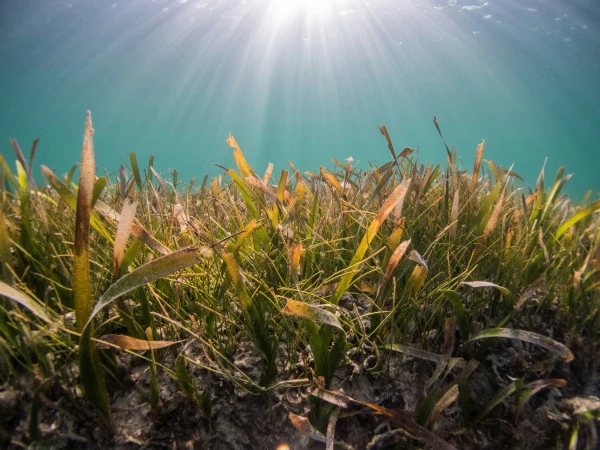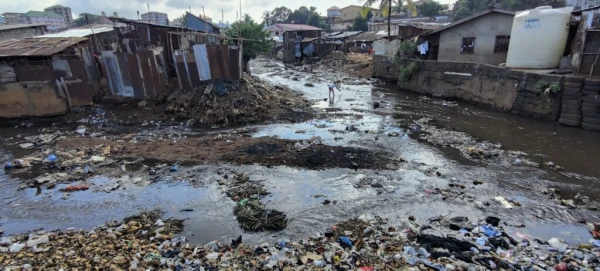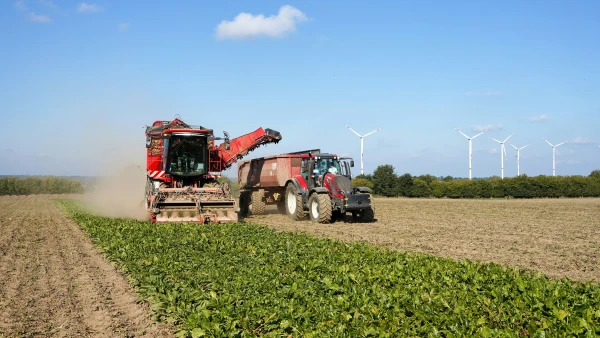Our Views
How to do Feasibility of water irrigation projects
Introduction
Feasibility studies for water irrigation projects are essential to determine if a project is practical and beneficial, especially in areas where water is scarce for agriculture. These studies look at various aspects like the project's purpose, how it fits with local needs, its costs, the best location, legal requirements, and potential risks. By doing this, planners can make sure the irrigation system will work well, be affordable, and last long-term, helping farmers and communities thrive.
Defining the Vision
The first step is to define what the project aims to achieve. This includes identifying whether it’s for small farmers or large agricultural businesses, and what crops it will support, like rice in dry areas or vegetables in semi-arid regions. It also involves deciding which area it will serve and setting clear goals, such as increasing crop yields or improving water efficiency, to guide the project’s design and success.
Understanding the Context
Next, it’s important to understand the local situation. This means talking to farmers, water authorities, and local government to get their input, which builds trust and ensures the project meets their needs. Analyzing water demand involves calculating how much water crops need based on soil, climate, and growth stages, while mapping existing water supplies helps identify gaps the new system can fill.
Fig. 1. Understanding the context for irrigation projects

Financial and Practical Considerations
Financially, the study estimates costs for building and running the system, like canals or pumps, and looks at funding sources, such as government grants or user fees. It also assesses if the project is cost-effective, considering benefits like increased farm output. Choosing the right location is key, ensuring the system is accessible, has necessary utilities, and suits the terrain, like using gravity-fed systems for flat areas.
Legal and Risk Management
Legally, the project must comply with permits for water use and construction, respect water rights, and meet environmental standards to avoid harming ecosystems. Risks, like droughts or technical failures, need plans to mitigate, such as building reservoirs or regular maintenance, to keep the project on track.
Fig. 2. Legal, environmental, social and risk assessment are crucial for irrigation projects

Detailed Analysis
This section provides a comprehensive exploration of feasibility studies for water irrigation projects, expanding on the key points and offering a detailed, professional perspective. It mirrors the structure of the direct answer but includes additional depth and examples, ensuring a thorough understanding for readers interested in the intricacies of such studies.
Introduction and Importance
Feasibility studies play a pivotal role in the planning stages of water irrigation projects, which are vital for supporting agriculture in regions with insufficient rainfall. These studies assess the project's viability from multiple angles, ensuring it aligns with community needs, is financially sustainable, and complies with legal and environmental standards. Given the significant investment and long-term impact, a thorough feasibility study is essential to avoid costly mistakes and maximize benefits, such as enhanced food security and economic growth for rural areas.
Defining the Vision: Setting Clear Objectives
The initial phase involves defining the project's vision, which starts with identifying its purpose. This could range from supporting small-scale farmers to serving large agricultural corporations, with considerations for the types of crops, such as water-intensive rice in arid regions or drought-resistant vegetables in semi-arid areas. Determining the target area is crucial, requiring an understanding of local demographics, land use, and current agricultural practices. For example, a project in a rural, underdeveloped area might need to address basic infrastructure alongside irrigation, ensuring accessibility for all farmers.
Articulating core objectives is another key step, such as increasing crop yield, improving water use efficiency, reducing dependence on rainfall, or enhancing food security. These objectives guide the project's design and provide benchmarks for evaluating success, ensuring alignment with stakeholder expectations and community needs.
Understanding the Context: Engaging Stakeholders and Analyzing Data
Understanding the local context is critical for ensuring the project meets real needs. Engaging local stakeholders—farmers, agricultural experts, water management authorities, and local government—is not just about gathering data; it's also about building trust and ensuring community support, which is vital for long-term success. Their insights help identify current challenges, potential benefits, and any cultural or social factors that could influence the project's acceptance.
Analyzing water demand data involves using established methods, such as the FAO's crop water requirement formula, which considers crop type, growth stage, and climate conditions. For instance, paddy fields have different water needs compared to vegetable farming, and understanding seasonal variations, especially peak demand periods, is essential for designing a system that can handle fluctuations without failure. Mapping existing water supply and irrigation systems is also crucial, assessing water quality and quantity to identify gaps. Poor water quality, for example, can affect crop growth and increase treatment costs, which must be factored into the feasibility study.
Financial Analysis: Crunching the Numbers
A detailed financial analysis is necessary to understand the economic viability of the project. Estimating costs includes both capital expenditures, such as constructing canals, pumps, and reservoirs, and operational expenditures, like maintenance, energy costs for pumping, and water treatment if needed. It's important to consider both initial setup costs and ongoing expenses to ensure the project stays within budget.
Calculating revenue projections involves determining funding sources, which can include government grants, international aid, private investments, or user fees from farmers. Each funding model has implications for management and sustainability; for instance, projects relying on user fees need a robust mechanism for collection and must assess farmers' willingness and ability to pay. Assessing profitability metrics, while not always profit-driven, is essential for cost-effectiveness. Metrics like the cost per cubic meter of water delivered or the return on investment in terms of increased agricultural output help evaluate the project's economic impact.
Performing sensitivity analysis is crucial to test how changes in key variables, such as water prices, crop yields, or government policy shifts, could affect financial outcomes. This helps identify potential risks and develop contingency plans, ensuring the project remains viable under different scenarios.
Fig. 3. Financial assessment of irriegation projects

Choosing the Right Location: Accessibility and Site Conditions
Selecting the right location significantly impacts the project's efficiency and effectiveness. Evaluating accessibility ensures the system can efficiently cover the target agricultural land, minimizing water loss and ensuring even distribution. This involves planning the layout of canals, pipelines, or other distribution methods, with considerations for proximity to water sources to reduce energy costs. For example, gravity-fed systems can be more energy-efficient than those requiring pumping uphill, especially in flat terrains.
Assessing utilities and regulations is non-negotiable, ensuring access to necessary infrastructure like electricity for pumps and compliance with environmental and land use laws. Evaluating site conditions, such as terrain, soil type, and existing water bodies, is also critical. For instance, flat terrains might suit surface irrigation, while hilly areas could require drip irrigation systems. A detailed site survey, including topographical mapping and soil testing, helps determine the best layout and identify geotechnical issues that could affect construction costs and feasibility.
Fig. 4. Site selection of irrigation projects

Legal and Regulatory Compliance: Navigating the Landscape
Navigating legal and regulatory hurdles is a crucial part of the feasibility study, given the heavily regulated nature of water resources. Obtaining necessary licenses and permits for water extraction, construction, and operation is essential, often requiring coordination with multiple government agencies. Ensuring water rights and allocation is particularly important, as water is a shared resource governed by specific laws and regulations in many regions. Compliance with these laws prevents legal disputes and ensures the project's longevity.
Environmental compliance is another key aspect, requiring an environmental impact assessment to understand and mitigate potential negative effects, such as changes in water flow, groundwater depletion, or salinity buildup in the soil. For projects involving land acquisition, following proper procedures and respecting landowners' rights is crucial to avoid social conflicts and legal challenges.
Risk Management: Preparing for Challenges
Every project comes with risks, and identifying them early allows for proactive management. Common risks in water irrigation projects include natural disasters like floods or droughts, technical failures such as pipe bursts or pump breakdowns, changes in government policies, and social issues like community resistance. For example, a drought could severely impact water availability, while regulatory changes might affect funding or operational permissions.
Developing mitigation strategies is essential to address these risks. Building reservoirs to store water during times of plenty can help mitigate drought risks, while regular maintenance and inspection schedules can reduce the likelihood of technical failures. Establishing contingency funds in the budget can handle unexpected expenses, and maintaining open communication with authorities can address regulatory changes swiftly. Risk management should be an ongoing process, with regular monitoring and evaluation to identify emerging risks and adjust strategies accordingly, ensuring the project's resilience and success.
Fig. 5. Risk assessment for irrigation projects

Conclusion
In conclusion, a feasibility study for water irrigation projects is a comprehensive process that requires careful consideration of the project's vision, context, finances, location, legal compliance, and risk management. By following these steps, project planners can ensure that the irrigation system is designed to meet the specific needs of the community, is financially sustainable, and operates within the bounds of legal and environmental regulations. This thorough approach not only enhances the likelihood of the project's success but also contributes to the long-term resilience and prosperity of the agricultural sector in the region.
Some of our experience conducting feasibility studies can be seen below:
- Feasibility study of a private hospital in Seychelles
- Feasibility Study for a new marina in the island of San Andrés through PPP
- Pre-feasibility study for construction of silo storages in Northern Ghana through PPP
- Feasibility study of a real estate WAQF project in Cotonou (Benin)
- Feasibility study and analysis of strategic alternatives of a touristic development in Natal
- Feasibility study for creation of an Investment and Export Promotion Agency of Health services in Tunisia
- Feasibility Study for car parks in Bishkek though PPP
- Feasibility study of markets in Benin and Togo under PPP scheme
- Feasibility Study for the establishment of a Large-Scale Cashew Processing Plant in Zambia
- Public Private Partnership (PPPs) study in the Housing Sector
- Review of Business Case for Manila Central Subway
- First Mover PPP Prefeasibility Study
- Review of the feasibility study of the PPP project Complejo El Brillante, in Cordoba (Spain)
- Review of pre-feasibility study of a Health PPP project
Table: Key Components of a Feasibility Study for Water Irrigation Projects
| Component | Description |
|---|---|
| Defining the Vision | Identify purpose, target area, and objectives, e.g., supporting specific crops. |
| Understanding the Context | Engage stakeholders, analyze water demand, map existing systems for gaps. |
| Financial Analysis | Estimate costs, project revenues, assess cost-effectiveness, perform sensitivity analysis. |
| Choosing the Right Location | Ensure accessibility, assess utilities, evaluate site conditions like terrain. |
| Legal Compliance | Obtain permits, ensure water rights, comply with environmental laws. |
| Risk Management | Identify risks (droughts, technical failures), develop mitigation strategies. |










